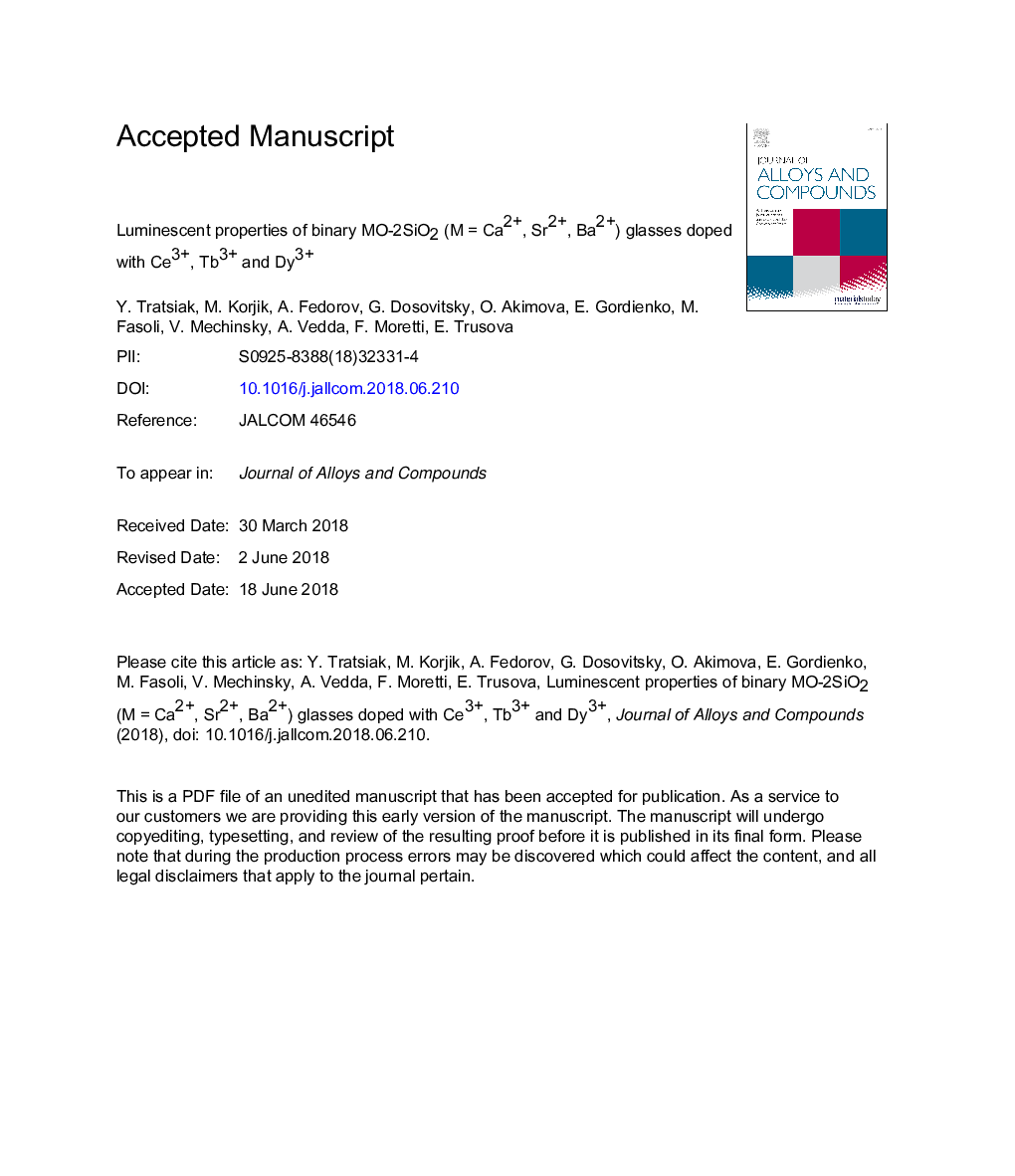| Article ID | Journal | Published Year | Pages | File Type |
|---|---|---|---|---|
| 7990485 | Journal of Alloys and Compounds | 2018 | 12 Pages |
Abstract
Binary alkali-earth silicate glasses doped with Ce3+, Tb3+, and Dy3+ were obtained by melt-quenching technique and their photo- and radio-luminescence properties were investigated. The disordered structure of the glass is responsible for an inhomogeneous broadening of the electronic radiative 5d1 energy level of Ce3+ due to their localization in several positions with different surroundings, possessing a slightly different local ligand field. The influence of glass matrix composition on the Stokes shift as a function of ionic radius of the cation was shown. The radio-luminescence spectral shapes were related to the simultaneous occurrence of emissions from all Ce3+ configurations with relative weights proportional to their abundance in the glasses. The possibility of excitation of Ce3+ in different localizations was demonstrated and confirmed by the systematic shift of emission from excitation. On the contrary, no shift was observed in the Tb3+ and Dy3+ doped glasses, thanks to the lower effect of ligand field on their radiative electronic levels.
Keywords
Related Topics
Physical Sciences and Engineering
Materials Science
Metals and Alloys
Authors
Y. Tratsiak, M. Korjik, A. Fedorov, G. Dosovitsky, O. Akimova, E. Gordienko, M. Fasoli, V. Mechinsky, A. Vedda, F. Moretti, E. Trusova,
